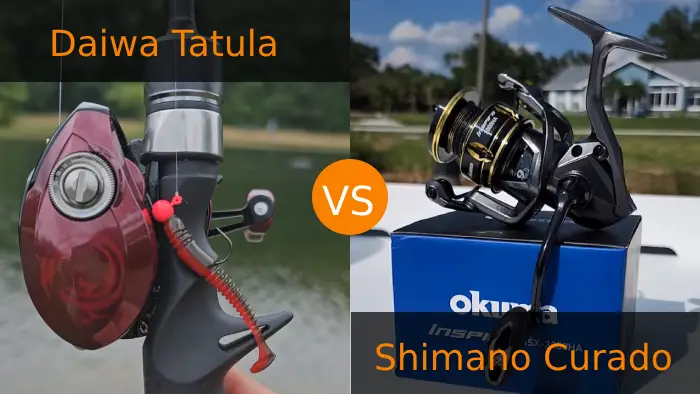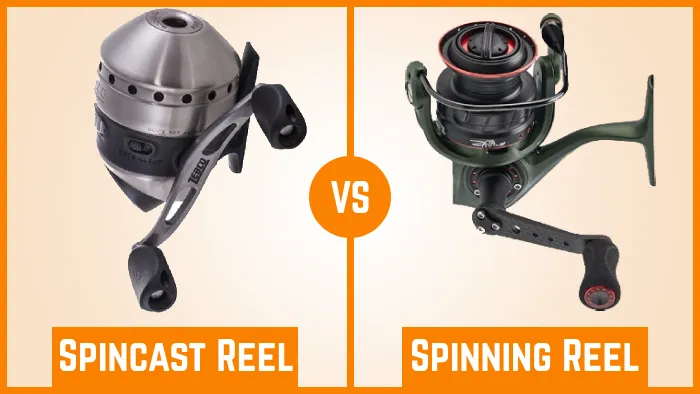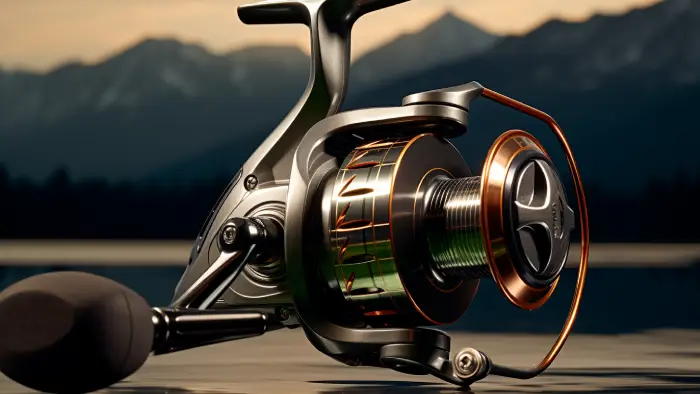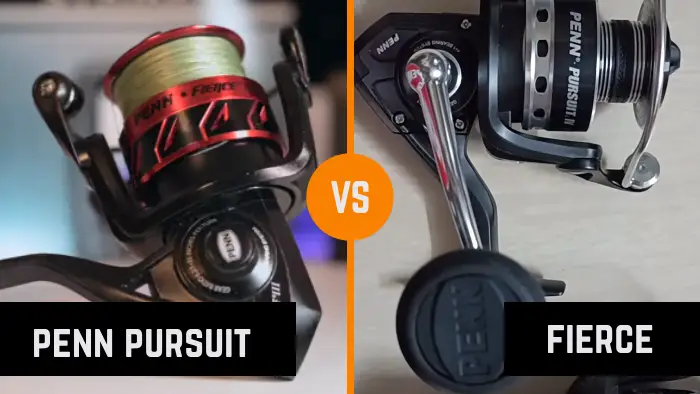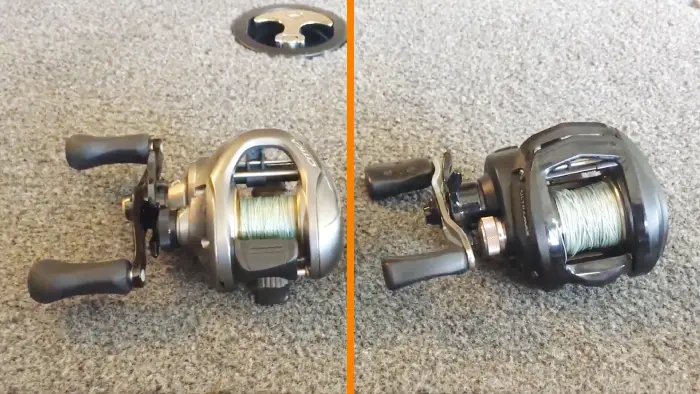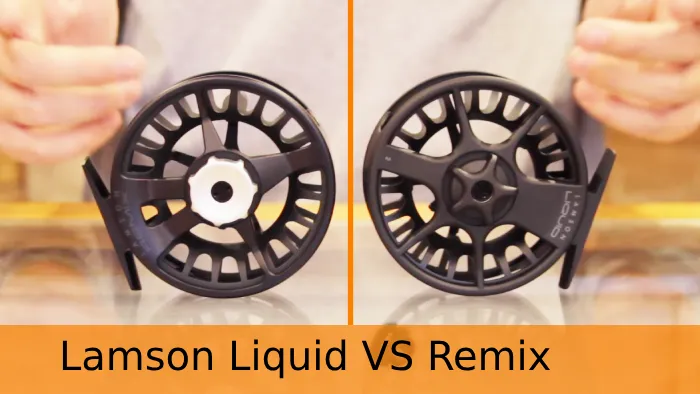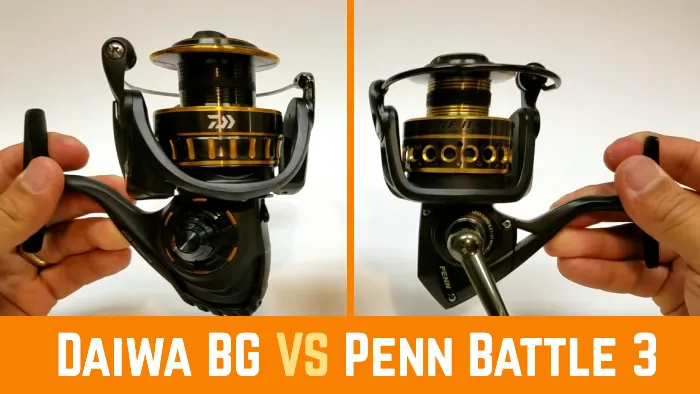Baitcaster vs Spinning Reel for Fishing: 10 Primary Differences
When fishing, the choice between a bait caster and a spinning reel must be made. Each has advantages and disadvantages, and understanding their fundamental differences makes fishing a more enjoyable experience.
To prevent backlashes, bait casters require finesse and technique, whereas spinning reels are very user-friendly and do not require much expertise. Baitcasters also offer a wider range of line choices and can handle various bait sizes, while spinning reels are well-known for their ability to handle light lines and lures.
Let’s cast a line and compare the bait caster and spinning reel, two popular choices among anglers. We’ll break down the major differences and help you decide which one suits your fishing style best.
Baitcaster vs Spinning Reel: Key Differences You Need to Know
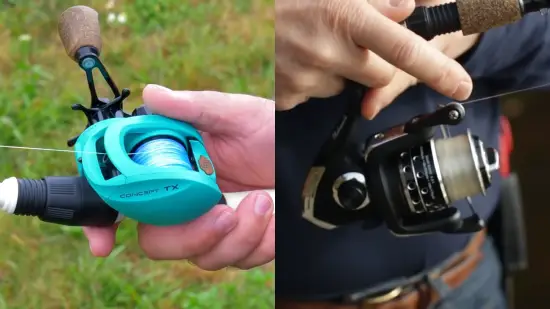
It is important to understand the following key differences between a bait caster and a spinning reel to choose the right one for fishing activities.
- Casting ease and backlash management
- Retrieve handle interchangeability
- Drag system smoothness
- Line and lure versatility
- Freezing conditions suitability
- Line capacity
- Weight and fatigue
- Casting distance
- Sound and wind knots
- Cost and maintenance
1. Casting Ease and Backlash Management
To manage backlashes while casting, beginners may find it easier to use a spinning reel rather than a bait caster. Spinning reels have a user-friendly design that eliminates the need to manage backlash or braking systems during casting. Spinning reels let the weight of the lure carry the line forward and cast it.
Conversely, bait casters require more finesse and technique to prevent backlashes. They have a spool that rotates as you cast, and if not properly controlled, it can result in the line tangling and creating a backlash.
2. Retrieve Handle Interchangeability
You can easily switch the handle for retrieving on a spinning reel. Switching the retrieve handle on a spinning reel allows for greater flexibility, catering to left- and right-handed anglers.
With this handle, you can adjust it to your preferred orientation regardless of your dominant hand, making fishing more comfortable and efficient.
On the other hand, baitcasters typically have a fixed handle orientation, meaning you have to choose between a right or left-handed model. This can limit your options and lead to discomfort or inefficiency if you aren’t using your dominant hand.
3. Drag System Smoothness
Smoothness is essential because it allows for more precise adjustments, giving you better control over line tension. Spinning reels are known for having smoother drag systems. This is particularly important when you’re dealing with larger, more powerful fish that can put up a strong fight
In contrast, baitcasting reels may not offer as smooth a drag. It’s hard to gauge how much drag you’re applying because they don’t have the clicking sound like spinning reels. This can make it more challenging to maintain consistent tension on the line, especially when battling a feisty fish.
4. Line and Lure Versatility
Spinning reels can handle light lines and lures, perfect for finesse techniques like drop shooting. They provide excellent control and precision when using lightweight baits, allowing for accurate casts and delicate presentations.
Alternatively, baitcasters offer a greater selection of line choices, from light to heavy, and can handle various bait sizes, including heavy baits like swimbaits. This versatility allows anglers to target a wider range of fish species and fishing conditions.
5. Freezing Conditions Suitability
Spinning reels are more suitable for freezing temperatures than bait casters due to their design features. Spinning rods with larger guides are designed to prevent line icing, a common issue in freezing conditions.
These larger guides allow the line to pass through smoothly, reducing the chances of ice forming on the line and affecting the casting and retrieval process.
On the other hand, baitcasting reels may not have this specific feature for icy conditions, making them more prone to line icing. Therefore, if you’re planning to fish in freezing conditions, opting for a spinning reel with larger guides would be wise to avoid any potential line freezing issues.
6. Line Capacity
Spinning reels generally offer more line capacity, which can be beneficial when dealing with large fish. With their larger spools, spinning reels can hold more fishing lines, allowing you to target bigger species and handle longer fights without worrying about running out of line.
In contrast, Baitcasting reels typically have lower line capacity than spinning reels. While this may limit your ability to target larger fish or engage in extended battles, bait casters offer increased accuracy and control advantages.
7. Weight and Fatigue
Consider the weight and balance of the bait caster and spinning reel to avoid fatigue while fishing. Spinning reels tend to be heavier than baitcasting reels, potentially causing fatigue during prolonged use. The added weight can strain your wrist, arm, and shoulder, making casting and retrieving your line harder.
Conversely, baitcasting reels are generally lighter, reducing fatigue and allowing for longer periods of fishing without discomfort. The lighter weight of a bait caster makes it easier to maneuver and control, resulting in a more enjoyable fishing experience.
8. Casting Distance

Spinning reels are renowned for their ability to cast long distances, especially when using lighter lures. The spinning reel’s design allows for the line to freely flow off the spool, which helps to maximize casting distance.
Meanwhile, baitcasters can achieve impressive casting distances but excel with middleweight lures on heavier lines. The free-flowing spool of a baitcaster allows for more control and precision when casting, which can result in greater distances.
Also, baitcasters offer the advantage of adjusting the braking system and spool tension, further optimizing casting distance.
9. Sound and Wind Knots
Spinning reel has a distinct clicking sound, while the baitcaster may not. The clicking sound in a spinning reel is produced by the drag system, which engages when a fish pulls the line. This clicking sound serves as an audible indication that the line is being taken out.
Conversely, baitcasters typically don’t have a clicking sound. This can be advantageous in certain situations where silence is crucial, such as when fishing in calm waters or targeting easily spooked fish.
Furthermore, bait casters are less prone to wind knots than spinning reels. Wind knots are more common with spinning reels, especially when using braided lines, due to the line’s tendency to twist and loop in windy conditions.
10. Cost and Maintenance
Spinning reels are generally more cost-effective, making them popular for beginners. They’re often cheaper to purchase and require less maintenance than bait casters. Spinning reels have fewer moving parts, meaning fewer opportunities for things to go wrong or break.
Then again, quality baitcasting reels can be more expensive, but they offer better durability and longevity. However, they may require more maintenance due to their design and potential exposure to water.
Baitcasters often require regular cleaning and lubrication to maintain optimal performance. You may also need to adjust the reel’s settings to prevent backlash.
Is a baitcaster better than a spinning reel?
You’ll often find that a baitcaster provides more control and accuracy than a spinning reel. Baitcasters are designed with a spool that revolves as you cast, allowing precise control over the line’s release. This means you can easily place your lure in tight spaces or target specific areas.
Also, bait casters offer a higher gear ratio, which means you can reel in your line faster and with more power. This is especially advantageous when you need to retrieve a lure quickly or if you’re battling a larger fish.
Why do fishermen prefer baitcasters?
When selecting a reel, it’s no wonder that fishermen prefer baitcasters for their superior control and power. Baitcasters offer a level of precision and accuracy unmatched by spinning reels.
With a baitcaster, you have complete control over the line, allowing you to cast accurately and effortlessly control the lure’s trajectory. The superior power of baitcasters also makes them the preferred choice for handling heavy lines and big fish.
Whether targeting trophy-sized bass or battling with saltwater giants, baitcasters provide the torque needed to handle the toughest fights. While spinning reels have become more versatile with the use of braided line, they still can’t compete with the sheer power and control that baitcasters offer.
What is a baitcasting reel best for?
Baitcasting reels are best for handling heavy lures and providing precise control over the line. Using heavier lures, such as crankbaits or large swimbaits, a baitcasting reel allows for better accuracy and control.
The direct line release from the spool ensures that you can cast these heavier lures with ease and accuracy, even in windy conditions. Also, baitcasters excel when you need to make precise casts, such as targeting specific structures or cover.
Adjusting the spool tension and braking system allows you to fine-tune your cast, resulting in accurate and targeted placements. Furthermore, baitcasters are ideal for techniques that require line control, such as flipping and pitching, where you need to accurately place your lure in tight spots.
What is a spinning reel best for?
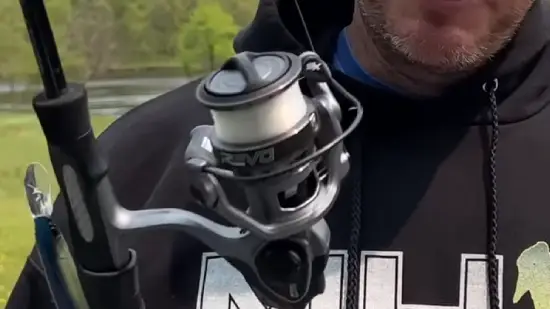
A spinning reel is best suited for a wide range of fishing techniques and lighter tackle. The versatility of a spinning reel makes it an excellent choice for various fishing styles and situations.
With their smooth and accurate casting ability, spinning reels are perfect for casting artificial lures, such as spinners and jigs. Also, they’re well-suited for live bait fishing, allowing you to present bait naturally and enticingly.
Spinning reel or Baitcaster: which is best for beginners?
If you’re starting out in fishing, the spinning reel is the best choice for beginners. It offers several advantages that make it easier for newcomers to learn and enjoy the sport.
Firstly, spinning reels are more forgiving in casting. The open-faced design allows for better control and reduces the chances of backlash, which can be frustrating for beginners using a bait caster.
Also, spinning reels are lightweight and easy to handle, making them comfortable for extended periods. They also have a more versatile line capacity, allowing beginners to experiment with different line weights and types.
Baitcaster vs Spinning Reel: The Ultimate Debate for Anglers
In the eternal debate of baitcaster vs. spinning reel, there is no definitive winner. Instead, your choice should reflect your unique fishing aspirations, skills, and the environment in which you cast your line.
If you’re new to the angling game, the forgiving nature of spinning reels might be your initial muse, offering the grace of a gentle learning curve and the versatility to handle finesse fishing. Conversely, the bait caster’s siren call may beckon, promising unrivaled control, precision, and power.Let your choice of reel reflect your passion for angling, your quest for adventure, and your desire to experience unforgettable moments during your next fishing trip. Tight lines and happy fly fishing, whether you’re with family or on your own.

